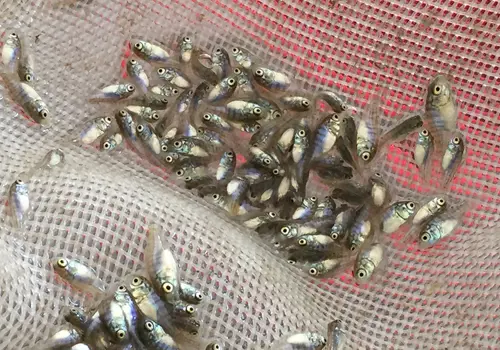
Fry and Fingerling
Growing a robust population
Mortality is high in this period
How to maximize feed intake?
How to transport my fingerlings?
Frequently Asked Questions
Key questions in the fry & fingerling stage
For tilapia, achieving a monosex male population is crucial. Start feeding immediately after hatching the eggs or collecting the fry, so the fish have access to treated feed as soon as they have absorbed their yolk sac. Delay of testosterone feed beyond 10 days risks unsuccessful sex reversal. Feed with testosterone for 21 days to ensure all fry develop as males, optimizing population uniformity and growth performance.
Contact your sales advisor for expert advice
Provide the fry and fingerlings with enough high-quality feed containing all essential nutrients to support rapid growth. However, overfeeding causes pollution and deterioration of water quality, reducing growth and health. Feeding smaller portions more frequently helps both growth and size uniformity as they have limited capacity to take the feed. Improved survival and better uniformity in size will ultimately enhance performance and profitability.
Check the feeding tables for optimal feeding frequencies
Record keeping is essential to know how your fish are doing and where to focus. At De Heus we have designed a record keeping guide which helps you to calculate feed conversion rate (FCR), monitor growth and plan harvesting and feed purchase. When comparing your key data to benchmark you also know when there is an issue or where you can improve. Integrating quality monitoring of feeding, growth, and water quality into your records provides a complete picture for better decision-making.
More about the importance of record keepingFish start feeding by absorbing their yolk-sac. Some can transition onto formulated feed after yolk absorption. Others need intermediate feeding with live feeds like micro-algae, rotifers or artemia for digestive development. Wean onto formulated feed as early as possible, by gradually increasing formulated feed, alternating with live feeds, until the fish are comfortable to take all their nutritional requirements from commercial diets.
Check with your sales advisor on the best weaning protocol for your fishTalk to our Aquaculture Experts
Need support to optimize fish growth and quality? Our specialists are here to help you tackle challenges and achieve top performance at every life stage.

Ivan Sswabe
